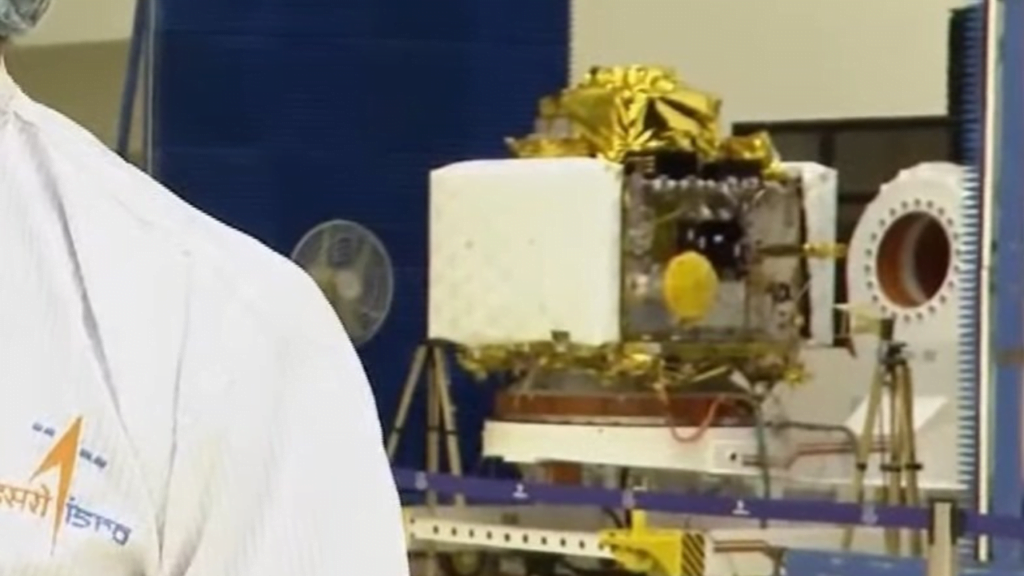XPoSat ( X-ray Polarimeter Satellite ) is India’s first and the world’s second dedicated polarimeter mission aiming to investigate the polarization of intense X-ray. ISRO is set to launch it with the PSLV C-58 mission on 1 January 2024 around 9:10 AM.
X-ray polarization is a vital diagnostic tool for studying celestial sources, providing insights into radiation mechanisms and geometric configurations. Analyzing polarization signatures allows for measurements of accreting black hole mass and spin, understanding source geometry and local properties, exploring accretion flow, outflow, and jets, investigating X-ray scattering and reflection mediums, estimating strong magnetic fields, and unveiling radiation zones and particle acceleration processes in pulsars, among other applications.

This satellite will orbit Earth at an altitude of about 650 kilometers and an inclination of about 6 degrees. This orbit will allow the spacecraft to observe X-ray sources during the periods when it passes through Earth’s shadow, or during eclipses. The mission is expected to last for about 5 years.
Payload of XPoSat ( X-ray Polarimeter Satellite )
The satellites will carry two scientific payloads in lower earth orbit.
(1) POLIX (Polarimeter Instrument in X-rays):
This is the primary payload of this satellite. POLIX functions as an X-ray Polarimeter designed for astronomical observations within the 8-30 keV energy range. The instrument comprises a collimator, a scatterer, and four X-ray proportional counter detectors arranged around the scatterer. Constructed from low atomic mass material, the scatterer induces anisotropic Thomson scattering of incoming polarized X-rays. To ensure optimal observations, the collimator confines the field of view to 3 degrees by 3 degrees, allowing only one bright source to be present during most observations. Over the planned lifespan of the XPoSat mission, POLIX is projected to observe approximately 40 bright astronomical sources spanning various categories.
The payload is developed by the Raman Research Institute (RRI), Bangalore, in collaboration with the U R Rao Satellite Centre (URSC).
(2) XSPECT ( X-ray Spectroscopy )
XSPECT, a powerful instrument aboard the XPoSat spacecraft, will study soft X-rays from various celestial objects. It will track changes in their brightness and energy, providing valuable insights into their behavior. XSPECT’s observations will complement those of POLIX, another XPoSat instrument that measures X-ray polarization. Together, they will paint a more complete picture of these exotic sources. This payload will give spectroscopic information in the energy range of 0.8-15 keV.
Read Also Top 5 Space Agencies of India
The Physics behind XPoSat
polarization of the light
Light is an electromagnetic wave, which means it is made up of electric and magnetic fields that oscillate (or wiggle) back and forth. The direction of these oscillations is called the polarization of the light. Most light sources produce unpolarized light, which means that the electric field is oscillating in all different directions. However, some light sources produce polarized light.
Polarization as a Diagnostic Tool
When the light comes from a single source, the electric and magnetic fields of the light waves oscillate in a specific direction. This is called polarized light.
When light comes from multiple sources, the electric and magnetic fields of the light waves may oscillate in different directions. This is called unpolarized light.
The degree of polarization is a measure of how much of the light is polarized. A higher degree of polarization means that more of the light waves are oscillating in the same direction.
The angle of polarization is the direction in which the electric field of the polarized light wave oscillates.
The polarization of light can be affected by various factors, such as scattering from objects or reflection from surfaces. Studying the polarization of light can be used to learn about the properties of the light source and the materials it interacts with.
Polarisation in Astronomy
In astronomy, we can study the properties of light from different sources by looking at its intensity, frequency, and polarization. The polarization of light is affected by the conditions of the environment where the light is emitted. For example, light emitted from charged particles orbiting a magnetic field will be polarized in a direction perpendicular to the magnetic field. The degree of polarization depends on the strength and uniformity of the magnetic field.
Studying the polarization of light from astronomical sources can help us learn about their properties, such as the mass and spin of black holes, the geometry of jets, and the strength of magnetic fields.
Global trends in Space-Based X-Ray Polarimetry
Space-based studies of X-ray polarization are becoming increasingly important in astronomy. The Imaging X-ray Polarimetry Explorer (IXPE) mission, launched in 2021, is NASA’s first space-based mission dedicated to studying X-ray polarization from various celestial objects.
The XPoSat mission will play a complementary role to IXPE by studying X-ray polarization in a different energy range. When both missions are operational, they will provide a comprehensive view of X-ray polarization from bright X-ray sources.
Read Also ISRO Mission in 2024: After the success in 2023
When ISRO will launch XPoSat?
ISRO will launch this satellite by PSLV C-58 mission on 1 January 2024 around 9:10 AM



Ay his is a nice mission. I track in “keeptarck. Space” I am waiting.
I am student 😁. I make sure this is location is right or fake.